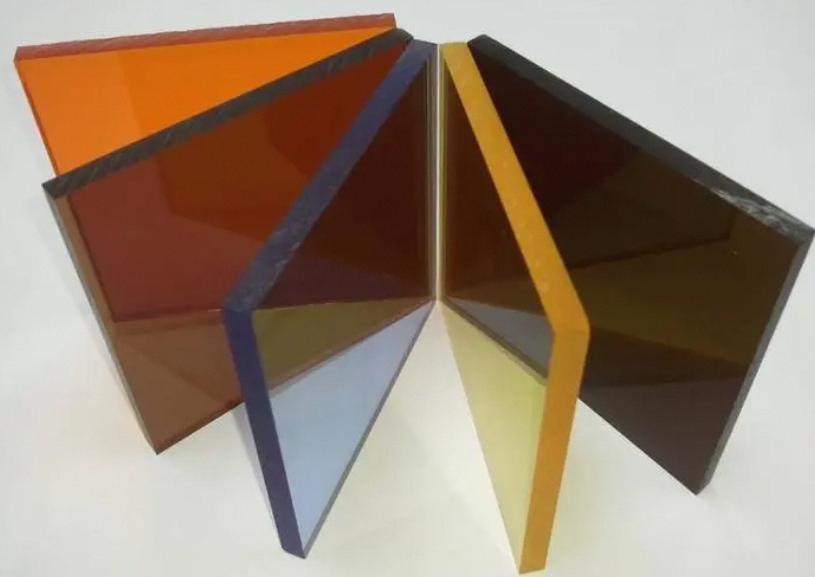When comparing durability, understanding how materials perform under different conditions helps you make informed decisions. Acrylic boards and plastic each offer unique strengths, depending on the specific type and Application.
Impact Resistance
Acrylic boards: High impact resistance but can crack under extreme force or temperature changes.
Acrylic boards handle impacts well in everyday use. Their structure resists shattering, making them safer than glass in many situations. However, extreme force or sudden temperature shifts may cause cracking. If your project involves exposure to harsh environments, consider this limitation.
Plastic: Varies by type; polycarbonate is highly impact-resistant, while others are less durable.
Plastic’s impact resistance depends on its type. Polycarbonate, for example, stands out for its toughness and ability to withstand heavy impacts without breaking. Softer plastics, like polyethylene, lack this strength and may deform or break more easily. For high-impact applications, choosing the right plastic type is crucial.
Scratch Resistance
Acrylic boards: Excellent scratch resistance, maintaining a smooth surface over time.
Acrylic boards excel in resisting scratches. Their smooth surface stays intact even after frequent handling, making them ideal for projects requiring a polished look. This durability ensures that acrylic maintains its clarity and aesthetic appeal for years.
Plastic: More prone to scratches, especially softer plastics like polyethylene.
Plastic, especially softer varieties, tends to scratch more easily. Over time, these marks can dull the surface and reduce its visual appeal. If scratch resistance is a priority, acrylic boards may serve you better than most plastic options.
Longevity and Weather Resistance
Acrylic boards: Resistant to UV rays and weathering, maintaining appearance for years.
Acrylic boards resist UV rays and harsh weather conditions effectively. They retain their clarity and color even after prolonged exposure to sunlight. This makes them a reliable choice for outdoor applications or areas with high UV exposure.
Plastic: May degrade or discolor over time, depending on the type and exposure conditions.
Plastic’s longevity varies widely. Some types, like polycarbonate, resist weathering well, while others may discolor or weaken when exposed to sunlight or extreme temperatures. If you need a material that lasts outdoors, carefully evaluate the type of plastic you plan to use.
By examining these factors, you can better understand the durability differences in Acrylic Board vs. Plastic. Each material offers distinct advantages, so selecting the right one depends on your project’s specific needs.
Appearance: Acrylic Board vs. Plastic
When comparing the appearance of materials, clarity, aesthetic appeal, and surface finish play a significant role in determining the right choice for your project. Acrylic boards and plastic each offer unique visual qualities that cater to different needs.
Clarity and Transparency
Acrylic boards: Crystal-clear and glossy, often used as a glass substitute.
Acrylic boards provide exceptional clarity, making them a popular alternative to glass. Their transparency allows light to pass through without distortion, creating a clean and polished look. This feature makes acrylic boards ideal for applications like display cases, picture frames, and signage where visual clarity is essential.
Plastic: Varies; some plastics are translucent or opaque, while others are clear but less polished.
Plastic offers a wide range of transparency options. Some types, like polycarbonate, can be clear but lack the high-gloss finish of acrylic. Others, such as polyethylene, are translucent or opaque, which may suit functional applications where aesthetics are less critical. If you need a material with specific light transmission properties, plastic provides versatile choices.
Aesthetic Appeal
Acrylic boards: Sleek and polished, ideal for high-end applications.
Acrylic boards deliver a refined and professional appearance. Their smooth and glossy surface enhances the overall look of any project. This makes them a preferred choice for luxury furniture, modern décor, and premium displays. If you want to achieve a sophisticated design, acrylic boards stand out as an excellent option.
Plastic: Functional and versatile but lacks the premium look of acrylic.
Plastic prioritizes functionality over elegance. While it serves well in practical applications, it often lacks the polished finish of acrylic. For projects where cost and utility matter more than aesthetics, plastic remains a reliable and adaptable material.
Surface Finish Options
Acrylic boards: Available in glossy, matte, or frosted finishes.
Acrylic boards offer diverse surface finishes to suit various design preferences. Glossy finishes create a vibrant and reflective look, while matte finishes provide a subtle and understated appearance. Frosted finishes diffuse light, adding a unique texture. These options allow you to customize the material to match your project’s style.
Plastic: Wide range of finishes, but quality depends on the type of plastic.
Plastic also comes in multiple finishes, including glossy, matte, and textured surfaces. However, the quality and consistency of these finishes depend on the type of plastic used. For example, polycarbonate may offer a smoother finish compared to other plastics. If surface quality is a priority, carefully evaluate the specific plastic type.
By understanding the differences in appearance between acrylic boards and plastic, you can make an informed decision. Whether you prioritize clarity, aesthetic appeal, or surface finish, each material has distinct advantages. Consider your project’s visual requirements to choose the best option in the debate of Acrylic Board vs. Plastic.
Practical Applications: Acrylic Board vs. Plastic
Understanding the practical applications of acrylic boards and plastic helps you choose the right material for your specific needs. Each material excels in different areas, offering unique benefits for various projects.
Best Uses for Acrylic Boards
Signage and displays: Acrylic’s clarity and durability make it ideal for professional signage.
Acrylic boards work exceptionally well for signage and displays. Their crystal-clear transparency ensures that text and images appear sharp and vibrant. This makes them a popular choice for retail stores, exhibitions, and corporate branding. The durability of acrylic also ensures that your signage remains intact and visually appealing over time.
Furniture and décor: Its polished look enhances modern interior designs.
Acrylic boards bring a sleek and contemporary touch to furniture and décor. Designers often use them to create coffee tables, shelves, and decorative panels. The glossy finish adds sophistication, while the material’s strength ensures long-lasting performance. If you want to elevate your interior design, acrylic boards offer both style and functionality.
Protective barriers: Commonly used for sneeze guards and partitions.
Acrylic boards serve as effective protective barriers in public spaces. Their durability and clarity make them perfect for sneeze guards, partitions, and shields in offices, restaurants, and healthcare facilities. These barriers provide safety without compromising visibility, ensuring a clean and professional appearance.
Best Uses for Plastic
Packaging: Lightweight and cost-effective for disposable or reusable packaging.
Plastic dominates the packaging industry due to its lightweight nature and affordability. It is widely used for food containers, bottles, and wrapping materials. The versatility of plastic allows manufacturers to create both disposable and reusable packaging solutions. This makes it an essential material for businesses aiming to balance cost and practicality.
Industrial components: Durable plastics like polycarbonate are used in machinery.
In industrial settings, plastic plays a crucial role in manufacturing components. Polycarbonate, known for its toughness, is often used in machinery parts, safety equipment, and automotive components. Its ability to withstand heavy impacts and harsh conditions makes it a reliable choice for demanding applications.
Everyday items: Found in household goods, toys, and electronics.
Plastic is a staple in everyday life. You’ll find it in items like kitchen utensils, storage containers, toys, and electronic devices. Its adaptability allows manufacturers to create Products in various shapes, sizes, and colors. This makes plastic indispensable for producing functional and affordable goods.
By exploring these practical applications, you can better understand how to utilize acrylic boards and plastic effectively. Whether you prioritize clarity and aesthetics or versatility and cost-efficiency, each material offers distinct advantages. In the debate of Acrylic Board vs. Plastic, your project’s requirements will guide your decision.
Acrylic boards and plastic offer distinct advantages, making each suitable for specific needs. Acrylic boards excel in projects that demand clarity, scratch resistance, and a polished finish. They provide a premium look and long-lasting durability. On the other hand, plastic stands out for its versatility, affordability, and impact resistance. It adapts well to functional and cost-effective applications. When deciding between these materials, focus on your project’s priorities. Evaluate factors like aesthetics, strength, and budget to make the best choice in the debate of Acrylic Board vs. Plastic.

